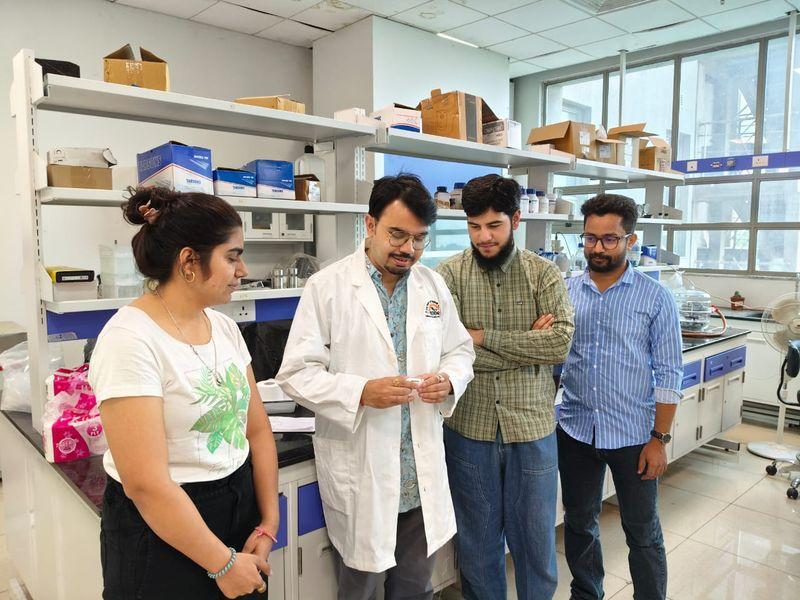
A First: Mohali Institute Invents Filter to Purify Dye Wastewater
In a breakthrough that has the potential to revolutionize the way we treat industrial wastewater, scientists at the Institute of Nanoscience and Technology (INST), Mohali, have developed a smart and biodegradable water filter that can remove toxic dyes from industrial wastewater and break them down using a combination of sunlight and vibrations. This innovative technology has been featured recently as the cover art of the prestigious journal “Nano Energy”.
The new filter, designed by a team of researchers led by Dr. Ashwani Kumar, Assistant Professor at INST, Mohali, is a major step forward in addressing the growing problem of industrial wastewater pollution. Industrial processes often involve the use of dyes and pigments, which can contaminate waterways and pose serious health risks to humans and the environment.
Traditional methods of treating industrial wastewater involve physical and chemical processes that can be expensive, energy-intensive, and often ineffective in removing the toxic dyes. The new filter, on the other hand, uses a novel combination of nanoparticles and a biodegradable polymer to capture and break down the dyes, making it a more sustainable and environmentally friendly solution.
The filter works by using nanoparticles to attract and trap the dye molecules, which are then broken down by sunlight and vibrations into harmless compounds. The biodegradable polymer used in the filter is also fully decomposable, reducing the risk of microplastics and other pollutants entering the environment.
“The filter is a game-changer in the field of wastewater treatment,” said Dr. Kumar. “Not only does it remove the toxic dyes, but it also breaks them down into harmless compounds, making it a more sustainable and environmentally friendly solution.”
The potential applications of this technology are vast, from treating industrial wastewater to removing pollutants from drinking water sources. According to the World Health Organization (WHO), industrial wastewater is one of the largest sources of water pollution globally, with millions of people worldwide at risk of waterborne diseases.
In addition to its environmental benefits, the new filter also has significant economic implications. The cost of treating industrial wastewater is a major expense for many industries, and the new filter could provide a more cost-effective solution.
The research team behind the filter is now working to scale up the technology and test its effectiveness in real-world scenarios. The team is also exploring ways to adapt the filter for use in other industrial processes, such as textile and paper production.
The innovation has been recognized as a major breakthrough in the field of nanotechnology, with the journal “Nano Energy” featuring the filter on its cover art. The journal is a leading international publication in the field of nanotechnology and energy, and the recognition is a testament to the significance of the research.
As the world grapples with the challenges of industrial wastewater pollution, the development of this new filter is a major step forward in addressing the problem. With its potential to remove toxic dyes and break them down into harmless compounds, the filter is a game-changer in the field of wastewater treatment.






